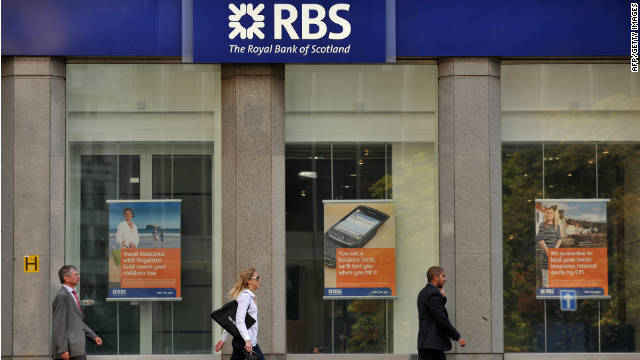The U.S. is taking action against three firms in Asia over oil deals with Iran.
STORY HIGHLIGHTS
- U.S. has slapped sanctions on three firms including a major Chinese oil trader
- US State Department said penalties would be imposed on China's Zhuhai Zhenrong
(CNN) -- The US has slapped sanctions on three firms including a major Chinese oil trader for selling refined oil products to Iran, just days after US Treasury secretary Tim Geithner travelled to Beijing to press for Chinese support on Iran sanctions.
The US State Department announced late Thursday night that penalties would be imposed on China's Zhuhai Zhenrong, the Singapore-based oil trader Kuo oil, and the UAE-based independent oil trader FAL.
While the measures are unlikely to have a big immediate impact on these three companies, they send a strong warning signal to energy companies working in Iran at a time when the US has been canvassing Asian countries for more support in isolating Tehran.
The US State Department called the sanctions against the three firms an "important" step in convincing Iran to change its behaviour, and highlighted the "potential connection between Iran's revenues derived from its energy sector and the funding of its proliferation [of] sensitive nuclear activities."
A spokesperson for Zhuhai Zhenrong said the company had not sold gasoline to Iran. "We've never exported a barrel, not even a wee bit of refined fuel to Iran," said Zheng Mei, director of the public affairs department.
According to the statement, the three firms violated US restrictions on supplying Iran with refined oil products that were passed in 2010. "Under the sanctions imposed today, all three companies are barred from receiving US export licenses, US Export Import Bank financing, and loans over $10m from US financial institutions," the US State Department said.
Importing refined oil products like petrol and diesel is crucial for Iran's economy because the country doesn't have sufficient refining infrastructure to process enough of its own crude into products.
China is the biggest buyer of Iran's crude oil and, according to the US State Department, is also a significant source of gasoline for Iran, but Chinese companies have until now avoided sanctions from the US.
China supported the most recent United Nations sanctions resolution on Iran in 2010, and some analysts believe that in exchange for that support the US may have turned a blind eye to Chinese companies which may have violated US laws. Last year the US placed sanctions on seven companies for selling refined oil products to Iran, but none of those were Chinese.
Zhuhai Zhenrong is a state-owned oil trader based in Southern China. The company has a special mandate from the State Council to do crude trades that offset military trade debt with Middle Eastern countries, according to their website.
Ms Zheng, the spokesperson for Zhenrong, said the company would continue buying Iranian crude. "Zhuhai Zhenrong's trade with Iran is carried out under the two governments. The trade accords with international law and Chinese laws and regulations," she said.
"What we've signed with Iran are long-term contracts and we import around 12m tonnes of crude from Iran each year," Ms Zheng said. "We've never exported gasoline to Iran. This is out of thin air! "
The US State Department said Zhuhai Zhenrong is Iran's largest supplier of refined oil products, brokering sales of gasoline worth more than $500m between July 2010 and January 2011.
The sanctions are likely to have little immediate impact on Zhenrong because the company does very little, if any, business in the US.
Additional reporting by Gwen Chen in Beijing



 AS A small boy Paul Allen, the co-founder of Microsoft, dreamed of going into space. He even tried to launch the hollow aluminium arm of a chair, stuffed with propellant, into orbit. It didn't work out. But his latest adventure in space travel—a joint venture with Burt Rutan, a famous designer of aircraft—looks more promising. Earlier this month, the two of them said they will build an air-launched orbital delivery system. To do this, Paul Allen’s company Stratolaunch Systems will have to build the world’s largest aeroplane.
AS A small boy Paul Allen, the co-founder of Microsoft, dreamed of going into space. He even tried to launch the hollow aluminium arm of a chair, stuffed with propellant, into orbit. It didn't work out. But his latest adventure in space travel—a joint venture with Burt Rutan, a famous designer of aircraft—looks more promising. Earlier this month, the two of them said they will build an air-launched orbital delivery system. To do this, Paul Allen’s company Stratolaunch Systems will have to build the world’s largest aeroplane.
